What is infinity and does it exist?
Two scientists with clipboards look through an observation window at a monkey and a typewriter. One scientist asks the other, "How long do you think it'll take him?" She responds with a shrug.
The monkey sits down at the typewriter, pushes a few keys, then tears the page off, walks over to the window and slaps the paper against the glass.
It reads, "Forever, you idiots. I've never read Shakespeare!"
If the universe isn't truly infinite, it may as well be. There's 93 billion light years of observable stuff. That's a large distance. Impossible to think about.
And that's just what we can see!
Space is so vast that pretty much everything you can imagine exists, somewhere.
But 93 billion is a number. It is finite. It has an end.
Comparing 93 billion, or even 93 quadrillion, to infinity is meaningless.
It's mathematically inaccurate to say, "Space is so vast that pretty much everything you can imagine exists, somewhere." A monkey typing on a typewriter (skypal?) won't write part of a Shakespeare play in 93 billion years. It doesn't work like that. Numbers don't scale gradually up to infinity.
If there was an immortal monkey and you sat him down in front of a typewriter, with an infinite amount of time, there is a certainty he will reproduce an exact replica of Romeo and Juliet. The experiment can't be done, but the math tells us something profound.
If the universe truly is infinite, everything you have ever imagined and haven't imagined must exist . . . somehow!
But everything imagined and not imagined must exist, if and only if the universe is infinite. Not nearly or almost infinite. There's no such thing as an almost infinite number, because infinity is not a number. Infinity transcends measurement.
What is π?
The radius of all circles is length one. The circumference of all circles is 2π or 6.28... radians. So the circumference divided by its radius is 2π. Here's some helpful gifs:
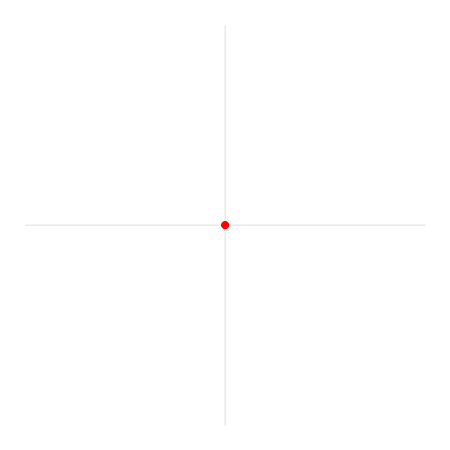


Another definition of the circumference of a circle is 3.14... times the diameter.
To 'roll out' a circle so that its circumference is expressed as line segments in a square is called "squaring the circle," but this can never be done perfectly because π is a transcendental number. It can't be expressed as an equation with rational numbers. An irrational number is one that can't be expressed as a fraction. π is also 'irrational.'
The circumference of a circle transcends measurement, so to describe it as a number with its own radius as the unit of measure produces an endless stream of digits that never repeat or fall into a permanent pattern.
It would take the rest of time to express π with 100% accuracy.
So what is π then, if not a number?
π = Circumference/diameter.
π is a comparison. π defines the immeasurable circumference of all circles with the measurable radius. It is a description by the finite of the infinite. If you try to express it as a number, it's never-ending, never-repeating.
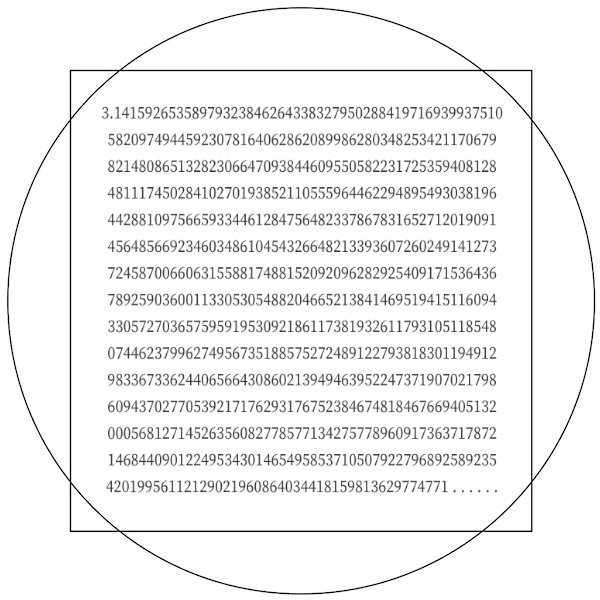
This tells us that the circle literally doesn't exist in the material world. You can fool the eye with a compass, but due to the changing thickness of the pencil, the texture of the paper, the angle of the hands, etc., the circle will not be perfect. Zoom in and the pencil line is fuzzy and uneven.

Even on a computer, only so many digits can be calculated before the Sun explodes.
Philosophy of sacred geometry
Are pure geometric forms just things we imagine, like the boogeyman or healthy donuts?
The mineral world expresses pure volumetric geometry with the greatest clarity, but it is important to remember that these solids do not exist in nature. In their perfect form they exist only on a metaphysical plane, as pure, creative ideation, and can be represented, for the mind to grasp, only through geometry. ~Sacred Geometry Philosophy and Practice by Robert Lawlor

Pure geometric forms, like π, exist and don't exist.
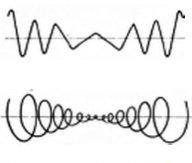
Nature gravitates toward and oscillates around pure geometric form. Like how when the spiralling nautilus shell grows, its geometry approaches but never touches the golden mean (φ). The fibonacci spiral, created with a compass and ruler, approximates φ, converging and diverging but never touching φ.
"Music is liquid architecture; architecture is frozen music." ~JW Goethe[π]
What makes a song so catchy? The underlying architecture is mysteriously attractive geometry.
In other words, the arithmetic and harmonic means between the double geometric ratios are the numerical ratios which correspond to the tonal intervals of the perfect fourth and the perfect fifth, the basic consonances in nearly all musical scales. ~Sacred Geometry Philosophy and Practice
All energy follows the path of least resistance. That path is directed by the usually hidden, always underlying architecture. The architecture "can be represented, for the mind to grasp, only through geometry."
By drawing constants found in nature, mysteriously attractive forms are produced. In creating and calculating constants like π or φ, the brain is able to comprehend the infinite truth of universal harmony and order that underlies everything.
π is one of many transcendental forms, but π is primary because, in sacred geometry, everything starts with the infinite circle. Geometrically speaking, before anything can be created there must be a division of unity; there must be one from which all is born.
The scientists watch as the monkey pushes a few keys on a typewriter.
"How long do you think it'll take him?"
The monkey tears the page off, walks over to the window and slaps the paper against the glass.
It reads, "Forever . . ."
///
Sacred Geometry Philosophy and Practice by Robert Lawlor
JRE podcast #610 with Brian Cox
https://en.wikipedia.org/wiki/Pi
[π] http://www.goodreads.com/quotes/337462-music-is-liquid-architecture-architecture-is-frozen-music
Pics and gifs not owned by skypal link to sources.
The convergence/divergence image comes from the book Sacred Geometry Philosophy and Practice by Robert Lawlor, which skypal owns.
"squaring the circle with a piece of π on top" is an image created by skypal. The square's perimeter approximates the circles circumference more precisely than what is possible with a compass on paper, but still not 100% accurately.

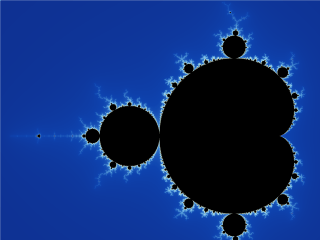
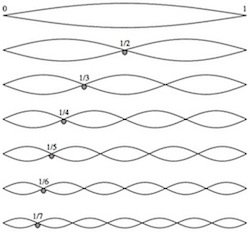

another great post, taming the numinous - thank you :))
Thank you @nik9. "taming the numinous." I love that.
Interesting post, thank you.
I disagree with one point though:
Not necessarily. What if the universe is not like π but more like an infinitely long sequence of some finite pattern?
I find the image of the fractal you posted to be a perfect and intuitive counter example. It certainly is infinite and yet we encounter the same pattern over and over again.
@fminer05, Thanks for reading and for the excellent question. The entire post was inspired by something Brian Cox says. Starting at 26:38 of JRE#610, "If the universe is infinite, which it may well be, in fact there are many ways the universe can be infinite, then that would happen [monkeys reproducing Shakespeare]. If it's in accord with the laws of physics, then it can happen. And everything that can happen, in an infinite universe, will happen, because the universe is formally infinite. I contend that in an infinite universe, even the most unlikely possibility must happen, in fact, formally, an infinite number of times."
So what I wrote "If the universe truly is infinite, everything you have ever imagined and haven't imagined must exist." Is actually not quite accurate, according to world renowned physicist Brian Cox. Everything you have ever imagined must exist only "If it's in accord with the laws of physics, then it can happen." In my gut I feel like my statement is still correct (Multi-verses with different laws), but my gut can be very wrong sometimes.
Are there any physicists on Steemit who can help? This topic is endlessly fascinating to me ;)
I think if the universe is an infinitely long sequence of some finite pattern, then Pi couldn't exist in that universe, since Pi doesn't ever repeat. But we need to ask a physicist.
The fractal image is of the Mandelbrot set which, like Pi, is infinite and never-repeating. While there are elements of similarity on different scales, the same pattern is not encountered over and over again. Similar patterns appear, but there is novelty on all scales.
Your monkey on a typewriter analogy reminds me of the junkyard tornado as it relates to the teleological argument for God, of whole I believe is the only one which possesses infinity being eternal in nature. I don't believe such applies to the universe as it seems problematic considering entropy (unless you believe the universe to be an open system of which I would ask how you arrived at that conclusion.)
I do concur that granted an infinite amount of time certainly every permutation of characters would be cycled; therefore, our simian Shakespeare may have produced every known work of literature even the Holy Bible ONLY if it were if the keystrokes exhausted every conceivable combination.
The problem is what if the monkey instead of typing a diversity of characters and combinations instead opted to just type "Ooh ooh ah ah!" for all eternity. My doubt is in the nature of literature possessing intelligibility just as genetic information. If the process by which the monkey types results in every combination of character, I believe it is possible. The process must traverse every possible combination. Likewise, I don't believe a junkyard tornado would produce a Boeing 747 as I would not think there would be enough diversity in the process. Look forward to other thoughts. I noted the comment above had a similar objection albeit framed differenty (and probably more concisely).
The main point is that if there is a probability greater than zero of something happening, it must happen, in an infinite universe, even if the probability is inconceivably small. This is why the teleological argument for God is not valid. Something as complex as the eye or brain must evolve, in an infinite universe. Unimaginable periods of time are involved as well as inconceivably small probabilities. Besides, it seems obvious to me that the observational data is miraculous and doesn't conflict with the theory of intelligent design, despite how some people (scientists and theologians) may interpret it.
As for the monkey only ever typing "Ooh u ah AHH!" If the probability is greater than zero, it must happen, in an infinite universe.
Thanks for the thoughtful comment.
Sorry, I forgot to mention. I believe there exists one additional requirement for information that possesses intelligibility and that is a mind. Under my construct, that mind is the Divine Mind. I will add that I am not an evidentiary apologist and I will explain why and hope you will consider the propositions thereof.
I believe that man knows intuitively that there are things that exist in reality that require a Creator if you will as we see His "invisible attributes" in the wonder that is universe. I am glad that we agree that there is some type of intelligence behind the data and also the expression of dissent of interpretations of data that preclude that possibility.
I will say this when we consider in using natural evidences and observation as a "proof" for God's existence or otherwise, I believe we are subject a kind of divine determinism that predisposes us to arriving at starkly different conclusions regarding God's existence. Why is this so? I believe the reason is theological in nature ultimately.
The Scriptures speak of God decreeing a "strong delusion" to be sent to those that believe not in the gospel of Christ's death being imputed as the sole righteousness. I believe He has caused (through deterministic causality with a metaphysical/supernatural component as well) to believe/trust/intellectually assent in the gospel to include the mechanism by which one is converted.(predestination).
We can kind of think of this as akin to a program with various function. God has set x number of programs to be assigned the function BelieveTheGospelOfGrace() to these programs at the moment all requisite propositions exist in the mind of the one being converted. God invokes the function and the source code is encrypted with Christ's righteous death (Romans 6- baptized in His death). In IT, there is a thing called a CRC check (cyclic redundancy check) which essentially verifies the integrity of the data using a hash value. In the end, our program will be inspected. Those without the appropriate hash value will be discarded. Those with the hash value will inherit immortality not because of their source but because of the encryption/hash value God provided. This may be tangential to your OP but wanted you to know where I was coming from and peradventure God will add the "function" to your code as well as I believe He has mine.
You have a very interesting perspective. To be clear, I never actually said that I believe in intelligent design, only that the scientific data doesn't conflict with the theory.
I think many scientists would disagree that "man knows intuitively that there are things that exist in reality that require a Creator if you will as we see His 'invisible attributes' in the wonder that is universe." Of course, their disagreement doesn't mean you are wrong. This is where the argument of random mutation over billions of years would come up. However, once again an interpretation is involved of what randomness is. While I am willing to entertain the possibility that random mutations and natural selection doesn't require an active intelligence, I wonder about the source of it all. Again, to be clear, I am not a believer.
I like your analogy with computer programs.